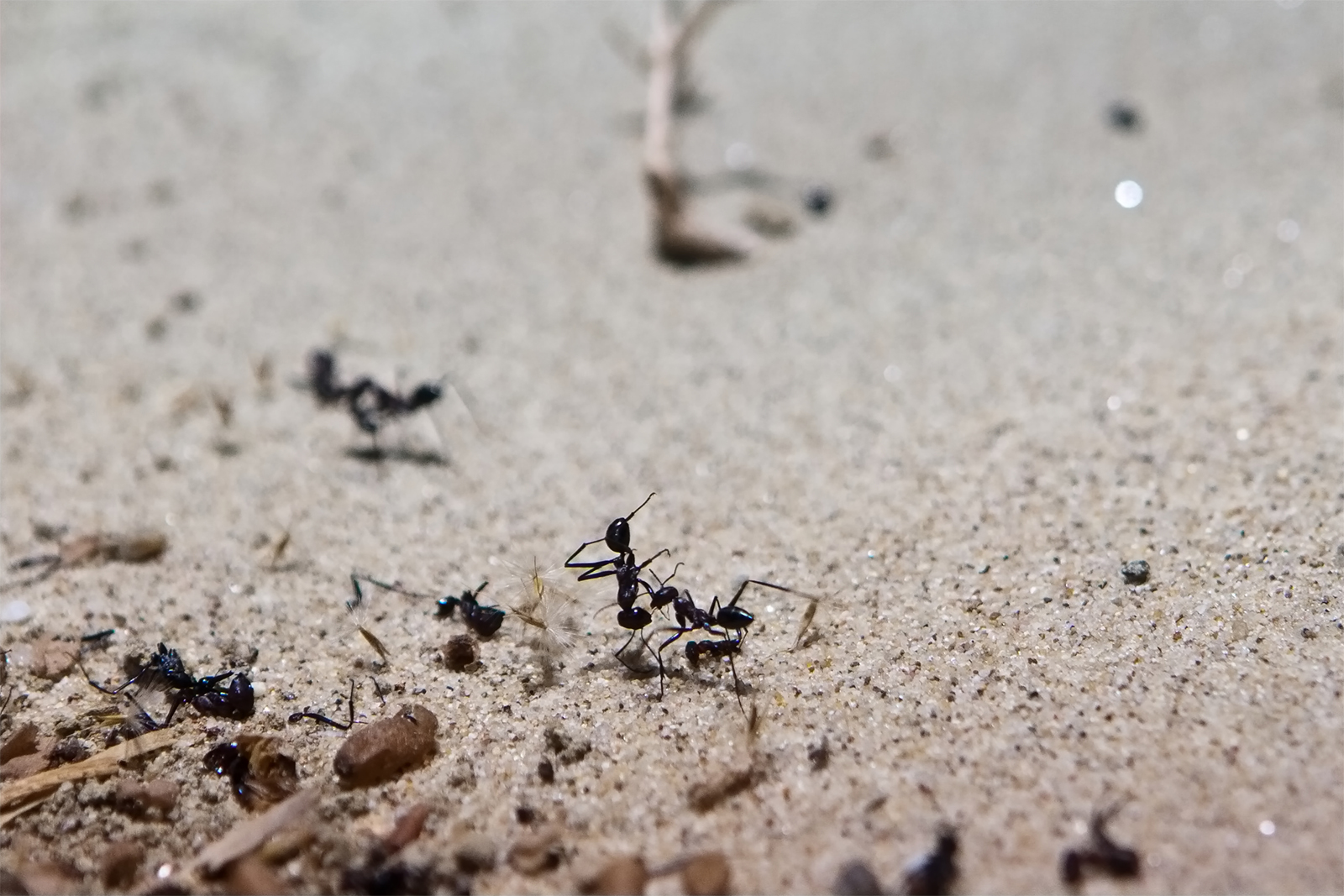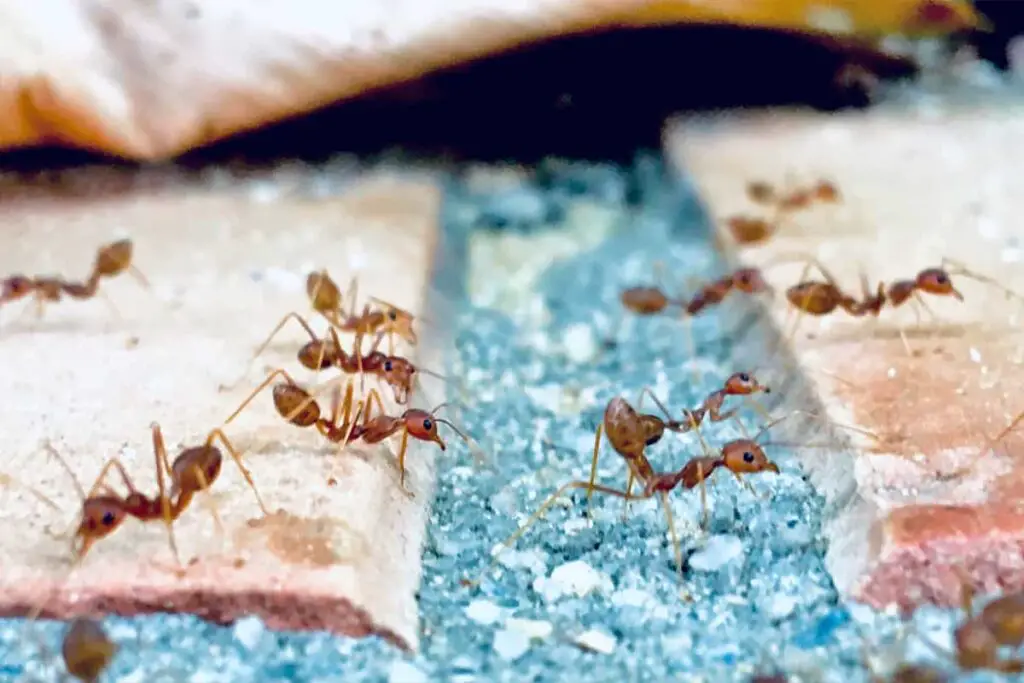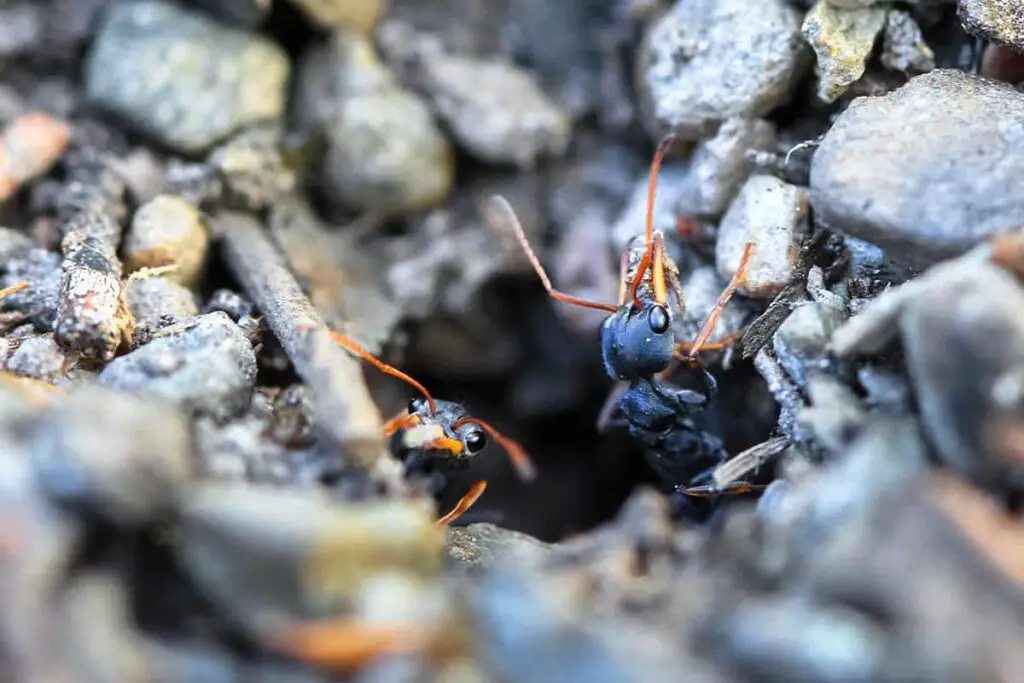
Ants are social insects that perform a variety of tasks within their colonies, playing a vital role in maintaining the overall health of their community. One fascinating and common behavior observed among ants is carrying their dead comrades away from the nest. This is not just a matter of compassion or solidarity but rather highlights an essential sanitation practice ants employ to maintain the cleanliness of their living environment.
The act of ants carrying their dead is known as necrophoresis, a behavior found in social insects like ants, bees, wasps, and termites. This sanitation behavior helps prevent the spread of diseases and parasites within the colony, ensuring the continued success and survival of their community.
In the following paragraphs, we will delve deeper into the reasons behind this intriguing behavior and explore its significance in the life of ants.
The Ant Necrophoric Behavior
Importance in Ant Colonies
Necrophoric behavior, or the process of ants carrying their dead, serves a crucial purpose in maintaining the well-being of the colony. By removing the dead ants, they can prevent the spread of diseases and contamination within the colony, ultimately protecting themselves and their queen from potential harm (SciFAQs). This hygienic behavior is essential for the survival of social insects like ants.
Mechanisms of Detection
When an ant dies, it releases a chemical known as a pheromone, which signals to other ants that food is available. This pheromone attracts live ants to the dead ant, prompting them to swarm and carry it away from the nest. One such chemical that dead ants emit to attract their fellow ants is Oleic acid (Pest Keen).
These pheromones allow ants to detect when their nestmates are dead, as observed in a study conducted by researchers from the University of Bristol in England. This is one of several studies that explore ants’ propensity to pick up their dead brethren and carry them away from the colony, ensuring a clean and hygienic environment for those who remain (Ant Hacks).
Reasons for Carrying Dead Ants
Hygiene and Disease Prevention
One of the main reasons ants carry dead ants is to maintain hygiene within the colony and prevent the spread of diseases. Ants are very social insects, and living in large colonies increases the risk of contamination. Dead ants can potentially carry harmful bacteria, viruses, or fungi that could pose a threat to the rest of the colony and the queen ant. As a result, they have developed the behavior of carrying away their dead and placing the bodies in a separate area known as the midden.
Resource Utilization
Another reason ants carry dead ants is to make use of available resources. Sometimes, the dead ant may not belong to the same colony, and it may be transported elsewhere for various reasons. For example, they might remove a foreign ant’s body from the nest to eliminate a potential threat and to recycle the nutrients from the dead ant. Carrying away dead ants can be seen as a form of
- Resource allocation: The colony might use the corpse as a resource for food or construction material.
- Territorial defense: Ant colonies often compete for resources and space, so carrying a dead ant away from the colony can prevent rival ant colonies from invading their territory.
By carrying away dead ants, the ant colony ensures that they maintain a clean and healthy environment, while also taking advantage of any available resources.
Types of Ants Exhibiting This Behavior
Various species of ants exhibit necrophoresis. It is also a common practice among social insects, including ants, bees, and wasps, to maintain colony hygiene and prevent contamination of their living environment. Here are some of the known ant species that exhibit this behavior:
1. Argentine ants – (Linepithema humile): These ants are known for their large colonies and aggressive behavior. They originate from South America and have spread to many other parts of the world. Argentine ants are known to carry their dead away from the colony and bury them in a specific location called a midden.
2. Red imported fire ants – (Solenopsis invicta): Native to South America, these ants have become a significant pest in several countries, including the United States. They are known for their aggressive behavior and painful sting. Fire ants also practice necrophoresis to keep their nests clean and free from any potential contamination caused by the presence of dead ants.
3. Black carpenter ants – (Camponotus pennsylvanicus): These ants are native to North America and are often found in wooded areas. They typically build their nests in dead or decaying wood. Like other ant species, black carpenter ants also carry away their dead to maintain the cleanliness of their colony.
4. Pharaoh ants – (Monomorium pharaonis): Originally from Africa, these ants can now be found worldwide. They are small, yellow or light brown ants that are known for their ability to adapt to various environments. Pharaoh ants also engage in necrophoresis to keep their colonies clean and reduce the risk of disease spread within the nest.
While these are just a few examples, many other ant species exhibit necrophoresis as well. This fascinating behavior emphasizes the importance of keeping a clean and healthy environment for the survival of the colony and its queen.

Environmental Factors Influencing Necrophoric Behavior
Temperature plays a significant role in the speed and efficiency of necrophoric behavior. Generally, higher temperatures result in faster corpse detection and removal by ants, promoting a more efficient disposal process. However, extreme temperatures may negatively impact the ants’ behavior and overall colony health, influencing their ability to perform necrophoresis efficiently.
Chemical cues are another essential factor that affects necrophoric behavior. When a nestmate dies, olfactory cues are released, signaling other ants to engage in necrophoresis. According to a study by Choe et al. (2009), oleic acid, a compound found in higher concentrations in the outer layer of dead ants, is a critical cue that encourages necrophoric behavior.
Colony size and density can also influence necrophoric behavior in ants. In larger and denser colonies, the probability of encountering dead nestmates increases, leading to more efficient removal rates. Conversely, smaller colonies with fewer individuals might struggle to efficiently locate and dispose of dead members.
Lastly, the presence of threats or pathogens within the colony can significantly impact necrophoric behavior. Ants are more likely to display faster and more vigilant necrophoric behavior when encountering corpses infected with fungal pathogens, as demonstrated by a study on Solenopsis invicta ants (Qiu et al., 2015). This adaptive response helps to prevent the spread of diseases within the colony.
Conclusion
In summary, ants carry their dead primarily for hygienic reasons. This behavior, known as necroptosis, involves ants of the colony removing dead bodies from their nest to maintain cleanliness and protect their environment from harmful bacteria and fungus.
Ants also have the ability to detect when their fellow ants are close to death. They do this through the secretion of a chemical that gets the attention of nearby worker ants, who then proceed to carry the dying or dead ant away from the nest.
Ultimately, this behavior demonstrates the remarkable social structure of ant colonies, which prioritize the health and well-being of the entire colony. By efficiently disposing of their dead, ants ensure that their nests remain clean and safe for the continued survival of the colony.
Driven by a passion for those tiny creatures that rule our world, we at Bug Domain strive to be your go-to resource for information on insects.




